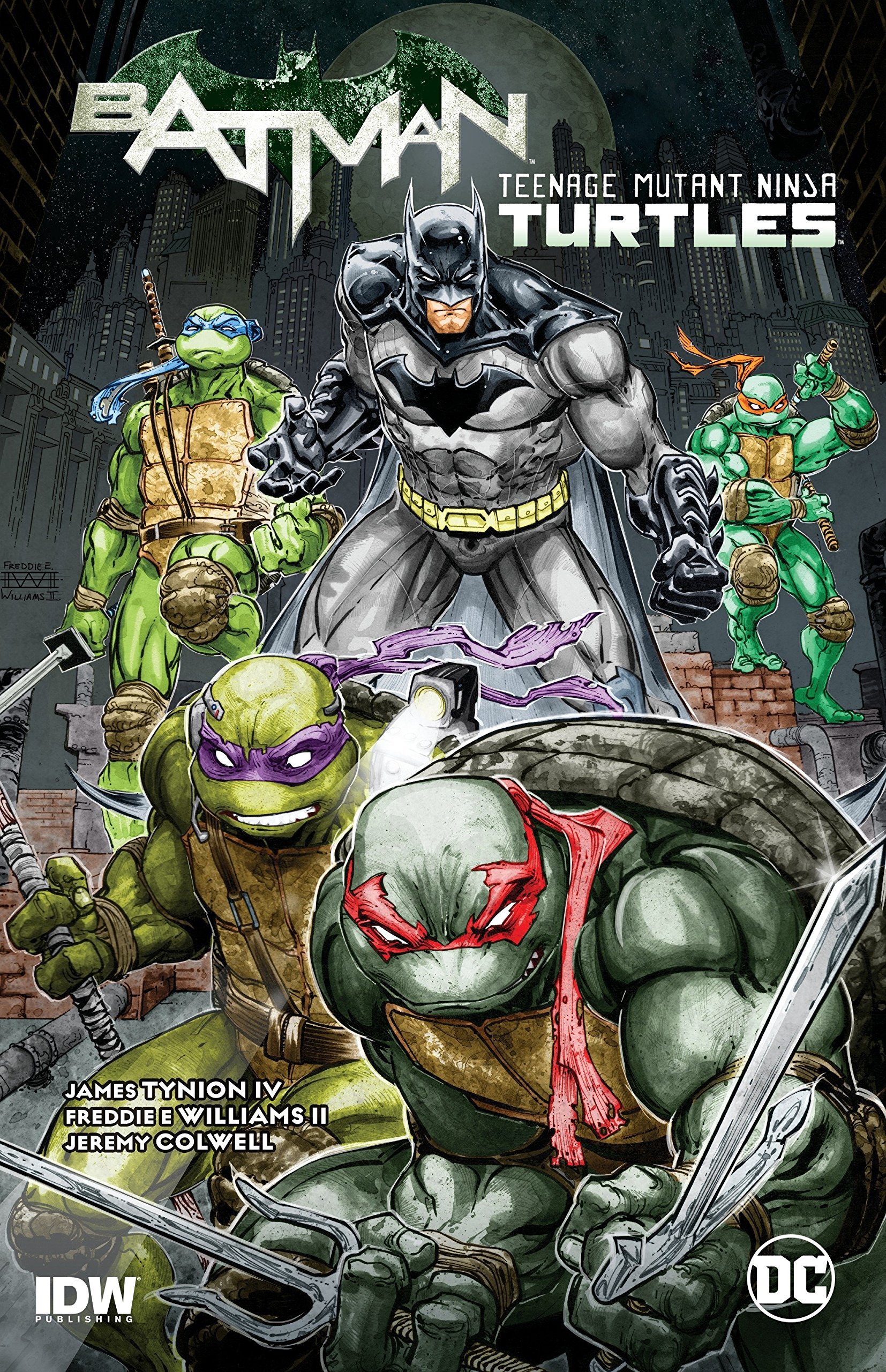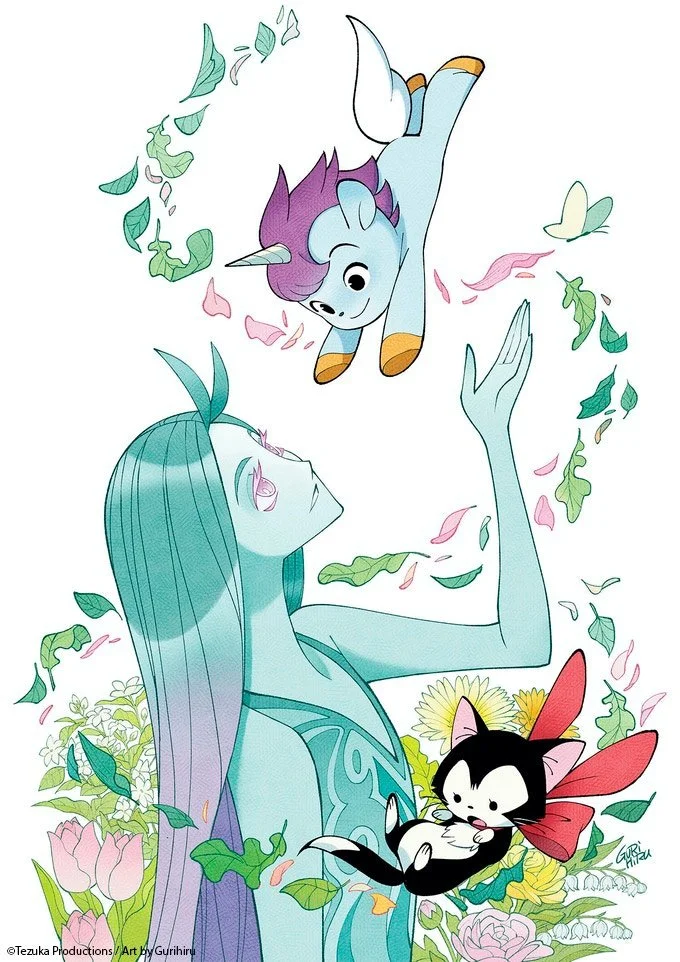The Man Without Fear...By The Year: Daredevil Comics 1982
By Bruno Savill De Jong — It’s 1982. The Commodore 64 is released, Late Night with David Letterman debuts, USA Today begins publication and the UK begins the Falklands War. People are listening to “Eye of the Tiger,” watching Blade Runner, and reading Daredevil.
If 1981 was when Frank Miller established the gritty urban world of his Daredevil, 1982 is the more operatic half which wraps it up. 1981 stripped Daredevil down to its essentials, focusing on the Kingpin’s Gang War that pulls in Matt Murdock. 1982’s Gang War is between supernatural Ninja clans and features a (literal) underground Sewer King. But these more bombastic elements do not detract from the grim tone which wears down Daredevil. When the Black Widow reappears, Daredevil comments that – despite her new hairdo and costume – she has not changed. “You have, Matt” Natasha replies, “you’ve changed a lot.”
Written by Frank Miller, Roger McKenzie (183)
Illustrated by Frank Miller, Klaus Janson,
Inks by Klaus Janson, Terry Austin (191)
Colors by Glynis Wein (178-179), Klaus Janson (180-190), Lynn Varley (191)
Lettered by Joe Rosen
Matt’s powers becoming misaligned, forcing Stick to put him into a sensory-deprivation chamber. Likewise, Daredevil does not understand the warring forces of the Hand and the Chaste, being an outsider to this larger mythology which Elektra was swept up in. Similarly, 1982 features three issues narrated by non-Daredevil characters, further enhancing his mystique; one from Ben Urich (Daredevil #179, “Spiked!”), one from Foggy Nelson (Daredevil #185, “Guts”) and – in one of Daredevil’s most lauded issues – from Bullseye’s perspective (Daredevil #181, “Last Hand”).
Many consider Daredevil #181 one of the best issues in Marvel Comics, particularly due to the iconic and shocking murder of Elektra by Bullseye. Gwen Stacy showed that Marvel could kill off love interests, but Bullseye cuts Elektra’s throat before brutally impaling her with her own sai, elongating their violent battle (and even Elektra’s dying moments). Each element established in 1981 – Elektra, Kingpin, Bullseye – collided together in this startling and well-paced double-sized issue. Yet Daredevil himself is barely present here, only viewed through Bullseye’s warped perspective (eyes a recurring motif here) as he chews over his vendetta against Daredevil. Bullseye’s acrid, sadistic inner-monologue gradually fades away as Daredevil #181 becomes pure kinetic action, both in the fatal fight with Elektra or the subsequent battle with Daredevil himself. The Man Without Fear’s only dialogue in the story being “you’ll kill no one – ever again” before he drops Bullseye to his death.
Regardless of Daredevil #181’s fluctuating continuity importance (Elektra’s death has lasting effects on Matt, despite her being frequently resurrected) or complex character motivations (Elektra refusing to kill Foggy Nelson because he recognised her from college), the comic holds up from its impactful image-focused storytelling. Much of Daredevil #181 uses silhouettes, including the climactic fight on the rooftops. Such expressionistic artwork takes over across 1982, transporting Daredevil into an otherworldly region of cross-hatching, pained close-ups and blunt blocky visuals.
Elektra’s death breaks something inside Matt. Immediately afterwards, he is in the denial phase, believing it to be a decoy or trick from the Kingpin. Matt needs to dig up Elektra’s gravestone and touch her cold face to actually accept she is gone. Frank Miller is not known for his nuanced portrayals of female characters, and Elektra did only exist for 13 issues before she was killed off for Matt’s character growth, not having an inner-monologue like the men of Daredevil but omniscient third-person narration. Yet Elektra’s sparse, stoic presence worked well to inform the closed-off femme fatale, becoming a faded memory of the woman Matt once loved whose redemption is now forever closed off to him.
Matt’s loyalty to the law is also tested when The Punisher escapes from prison to crack down on New York drug dealers. It was actually The Punisher who told Bullseye about Elektra “replacing him,” explaining “chances are you’ll do something dumb. Get yourself killed. I’d like that,” giving a direct link to Elektra’s death (ironically the two would later hook up in Charles Soule’s Thunderbolts). Portrayals of The Punisher have varied over the years – sometimes he’s a righteous antihero, sometimes a deeply traumatised amoral man of violence – but here the Punisher’s “War on Crime” seems acutely deranged. As he beats a junkie for information, he shouts “I want you to suffer! As I have suffered!” And when Frank Castle gives his typical Punisher speech of how “those men are filth – peddling their poison to the weak, the lost, the innocent. Their kind have much to pay for. Much,” he is smiling. Daredevil might be pushed to the edge, but The Punisher represents the vindictive lethal area on the other side.
Still, even if Daredevil doesn’t kill criminals like The Punisher, he does treat his girlfriend Heather Glenn horrifically. Alongside his usual neglect of her, Matt is too distracted by Elektra’s death to look into the hostile takeover of her company. Then he says Heather hasn’t “got the head for this sort of thing” and should give it up. Even worse, Matt wishes Heather would resign so she’s completely dependent on him, throwing in an unexpected marriage proposal that he continually pesters her for an answer to. Matt is clearly suffering a manic-depressive desperation brought on by Elektra’s death, telling Heather “There’s a hole in me. A great, black hole that you could fill.” He wants the idea of a “stable” secure relationship, a woman who won’t become a ninja-assassin or die in his arms, even if it whittles Heather down into a tearful wreck.
The brutal twisted breakdown of Heather and Matt’s relationship is tough to read. Heather has already been through a lot, but rarely given true interiority by the writers, and now Matt carelessly toys with her emotions by promising the affection Heather craves without substance behind it. Frank Miller has noted problems with female characters, but the cruelty towards Heather is keenly sympathetic, Matt being so traumatised by Elektra’s he locks himself and Heather into a toxic relationship that is poisoning both of them. Black Widow notices it too when she observes Matt and (an increasingly alcoholic) Heather, Foggy commenting to her that Matt is “hurt and angry and lonely – and it’s making him mean.” Natasha and Foggy come up with their own harsh solution, forging break-up letters to Matt and Heather from each other. But while the methods are questionable, the goal has some merits, since trying to fill that internal “black hole” was only pulling them both further into a dark vortex.
Frank Miller’s run of Daredevil escalates to the battle between the Chaste and the Hand. The issues are relatively plot-light, instead packed with intense sequences of action as Daredevil, Black Widow and Chaste soldiers fight off hordes of Hand ninjas. Elektra is also given more backstory, being initially trained by the Chaste before Stick casts her away for being filled with hate, which sends her to the Hand. Elektra is the link between the two enclaves, the Hand attempting to resurrect her, while the Chaste tries to stop them. Matt is again caught between his duties and his desires, his passionate faith in Elektra purifying her soul as he tries to resurrect her himself. The ending of Daredevil #190 (“Resurrection”) has Elektra scaling a mountain – it being ambiguous whether it is real or spiritually symbolic – ultimately triumphant against the tragic evil dragging her downwards.
Yet this conflict between primal good and evil (so pure Stick refuses Elektra’s admittance to the Chaste) is infused with a weariness. Stick sacrifices himself to stop one of the Hand’s assaults. And his protégé Stone comments on Daredevil’s impetuousness “perhaps Stick could have taught him the way. But Stick is dead. And I grow old. And there is no one to replace me.” 1981 featured characters cast into certain roles, but 1982 includes attempted (often failed) substitutions. The Kingpin is mirrored by the Sewer King, who has taken the disoriented Vanessa captive. Bullseye being incensed that Elektra has replaced him. Matt is trying to fill the “black hole” in his heart with Heather. Even Turk Barret comically attempts to gain respect by stealing the Stilt-Man armour. But such positions cannot be traded around, people being affixed to their fateful positions, for good or ill. Kingpin even helps Daredevil fight off the Hand because it interferes with their symbiotic order, telling him “We need each other, Daredevil. We are partners, after a fashion.” It’s a chilling note which hints that, even if a greater evil is defeated, the banal elements of crime keep going around in circles.
Instead of Elektra’s spiritual triumph in “Resurrection,” Frank Miller ends his Daredevil run on another, quieter, note of circularity and replacements in Daredevil #191, “Roulette.” Here, Daredevil plays Russian Roulette with a paralysed Bullseye, telling him about a kid called Chuckie who obsessively watches their battle from Daredevil #147. Chuckie emulates Daredevil to the point he believes he is Daredevil. His fragile mind is broken further when he discovers his controlling father is a criminal, traumatising the snooping Chuckie with the conflicting role-models, making him shoot another child. Daredevil is left questioning his own purpose, whether he inspires “Justice” or that “Might Makes Right”; “am I fighting violence – or teaching it?” It is a mature and measured note to conclude on, confronting the existential angst of an unending circle of violence with the bitter melancholy of a Paul Schrader film. Daredevil and Bullseye spin around each other but, for better or worse, Daredevil can neither kill him or give up fighting. The roulette wheel keeps rolling, without any bullets to end it.
“Roulette” also has Matt confess one time his father Jack Murdock hit him as a child. Frank Miller had reinvented Daredevil in many ways, and now even the simple childhood of Matt has been muddied. Miller transformed Daredevil from a standard superhero comic into a dense urban tapestry, albeit one filled with Sewer Kings and mystical dissolving Ninjas. Nor is Miller’s sense of humour completely gone, given Foggy Nelson’s comedic tale in “Guts” or the pathetic Turk Barrett. There is even more to say about Miller’s Daredevil – Klaus Janson taking over pencilling, the corruption of politicians, the placement of childhood “innocence” – but the overall impression is one of conviction, where characters commit to their inescapable demons before final moments of freedom, told with a masterful command of storytelling.
Read classic Daredevil Comics!
Check out past installments from The Man Without Fear…By The Year!
Check out Bruno Savill De Jong’s last regular series, Gotham Central Case by Case!
Bruno Savill De Jong is a recent undergraduate of English and freelance writer on films and comics, living in London. His infrequent comics-blog is Panels are Windows and semi-frequent Twitter is BrunoSavillDeJo.













